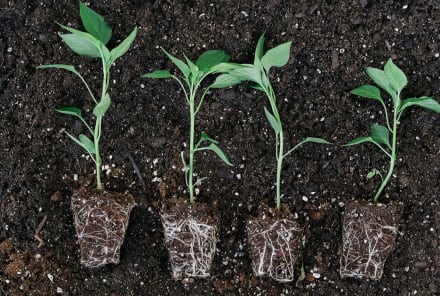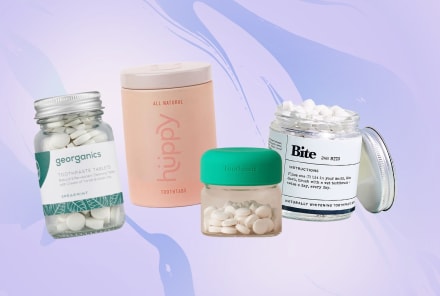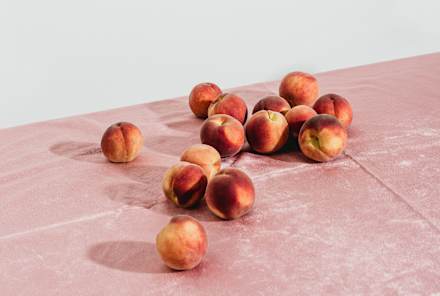Advertisement
Is LECA A Good Substitute For Soil? Plant Experts Weigh In


Plant shops and nurseries often sell LECA clay pebbles and soil side by side—but are they interchangeable? We dug around for more intel on what LECA is, why it's used as a soil alternative, and whether it's actually effective at keeping plants alive.
What is LECA?
LECA, or lightweight expanded clay aggregate, is made of little pieces of clay that have been cooked at high heat to the point of bursting.
The resulting tiny, Cocoa Puff–esque clay pebbles filled with air bubbles are often used in industrial hydroponic gardens, ones that swap soil for another growing medium.
If you're a rooftop grower who needs to keep things light, LECA is a great alternative to heavy soil. Indoor farmers who grow crops year-round also use LECA because it can lead to better yields in climate-controlled conditions.
But a flip through TikTok will show you that houseplant enthusiasts are now swapping soil with LECA as well, to help their plants grow healthier with less effort. But does it work?
The pros & cons of using LECA instead of soil
LECA rocks allow for more air circulation than compact layers of soil. As such, they can help prevent some of the common side effects of overwatering, like pests and root rot. Since these rocks also absorb water and then slowly release it, people claim it allows them to water their plants less frequently.
But there are some downsides to swapping soil for sterile clay. You can think of LECA as a totally blank slate: It doesn't have the living organisms that could attract mold or pests, but it doesn't have any of the beneficial nutrients you'll find in soil either. As such, those who use LECA need to constantly fertilize it to ensure their plants have enough nutrients like nitrogen, phosphorous, and potassium.
In industrial settings, systems are in place to monitor LECA's pH and water levels and ensure they're suitable for plant growth. It can be difficult to recreate these conditions at home, so the switch to LECA can be a tricky transition.
The pros & cons of using LECA and soil
Another reason someone might use LECA or another type of pebble is if they want to improve their soil's drainage. The idea is that placing them at the bottom of a pot (underneath the soil) can help store any excess water and keep it from drowning a plant's roots.
This technique gets mixed reviews: While some people claim it can help prevent overwatering, others say that it can actually do more harm than good, due to something called the perched water table.
"Basically, there's a difference in medium between the rocks and the soil, so all the water will saturate at the bottom of the soil instead of settling where the rocks are," explains plant care expert and chemistry teacher Paul Thompson, M.A. "Now, you've moved that level of saturation up higher, to where the roots are." This can cause water to choke the roots and lead to rot, which is hard to bounce back from.
There is, however, one thing that can basically ensure you won't overwater your plants, whether you're using LECA or not: a drainage hole.
When keeping plants indoors, you'll want to recreate the outdoor environment they've adapted to. And, as Thompson reminds us, "in nature, plants can easily get rid of excess water because they have the whole ground. But when you're talking about a tiny little volume, it's so important to have that drainage so extra water can drain out."
Marie Viljoen, the urban gardener, author, and chef behind 66 Square Feet (Plus), agrees, cautioning, "Do not go for a pot without drainage holes. If it doesn't [have any], drill a hole in it... That's the No. 1 thing a container needs."
Drainage holes also provide a visual cue that you've given your plant enough water. Once you see it trickling from the bottom of the pot, it's a sign your soil is moist enough. Without one, it's impossible to know if your plant is still thirsty—or on the verge of drowning.
Isabelle Palmer, city garden designer and founder of The Balcony Gardener, admits that the few times she's tried to place plants in decorative pots without drainage holes, they've died. "After a while, it just becomes such a moist environment that the roots rot and it kills the plant," she says. "I would never do that again."
The takeaway
LECA can be used as a soil amendment or replacement, to reduce the risk of accidentally drowning a plant. While these clay pebbles do help deliver more oxygen to a plant's roots, they can easily turn sour when used incorrectly.
If you use them to replace soil, do your research beforehand. And if you're tempted to use them in addition to soil, just make sure your pot has a drainage hole first.











